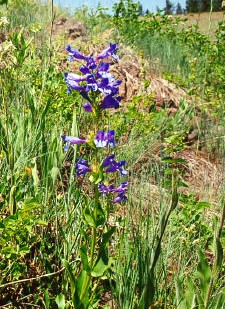| Penstemon pennellianus | |
|---|---|
 | |
| Scientific classification | |
| Kingdom: | Plantae |
| Clade: | Tracheophytes |
| Clade: | Angiosperms |
| Clade: | Eudicots |
| Clade: | Asterids |
| Order: | Lamiales |
| Family: | Plantaginaceae |
| Genus: | Penstemon |
| Species: | P. pennellianus |
| Binomial name | |
| Penstemon pennellianus D.D.Keck. | |
Penstemon pennellianus, often called the Blue Mountain beardtongue or Blue Mountain penstemon, is a species of beardtongue native to Washington and Oregon. [1] [2]
